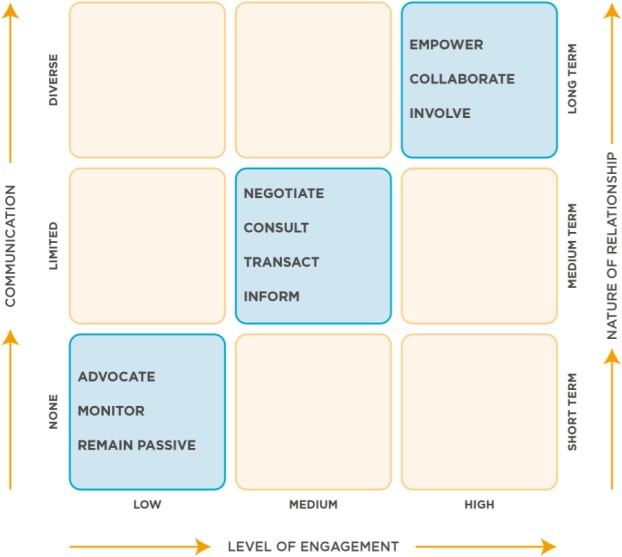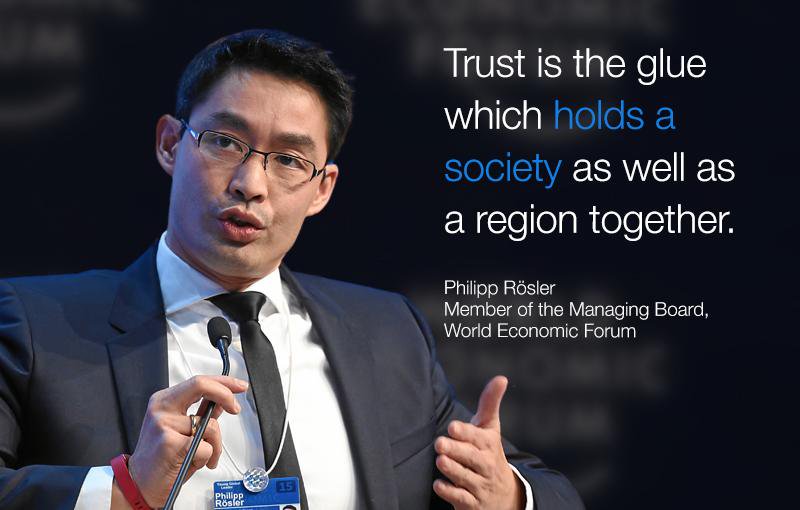3.3.4 Step 3: Consulting
Course subject(s)
Module 3. How: Stakeholder engagement and gender dimension
It is important to define your choice of engagement tactics, which will lead you to a format that matches your level of ambition. The method and planning of engagement should be selected to best meet the needs, capacity and expectations of your organization.
There are different levels and associated engagement methods depending on the natures and extent of stakeholder involvement. For instance, the following matrix can be used:

There are many ways for consulting. Check this document on Policy Actor Analysis (highly recommended reading) by Bert Enserink (associate professor in policy analysis at TU Delft).
Best practices
These are some general best practices:
- Don’t wait until the problem is there to engage. Start the engagement early! Relationships-building takes time. Trust, mutual respect, understanding, etc, are developed and evolve over time. Take a pro-active approach: a pre-exploration phase, signalling to local stakeholders and communities that their views matter and that their well-being is important is already a start ahead.
- Be transparent and honest. Be clear upfront that there are still many uncertainties and unknowns. Use the pre-exploration phase to engage with stakeholders and try to identify potential issues and risks and use this interaction to generate ideas and alternative solutions on early design questions.
- Successful engagement depends on understanding why an organisation is engaging (the purpose), what issues to engage on (the scope), and who needs to be involved in the engagement (ownership, mandate, stakeholders).
- Tailor the engagement strategy to your business strategy .

Facilitation process
During a ‘live’ engagement, it is important to pay attention to the facilitation process. Tips:
- Effective engagement depends upon a shared understanding of issues.This works best when all participants have access to the same information. However, there may be legitimate reasons for not sharing information. The information may be irrelevant, commercially sensitive or misleading when discussed out of context. Another option might be to have a confidentiality agreement.
- Share stakeholder expectations: Share feedback from your earlier goal setting consultation process or open the floor to stakeholders to share their expectations for the engagement.
- Focus the discussion: Dialogues can veer off-topic if not properly focused. Stick to your agenda and remain within the scope of the issue. Table any out of-scope issues for future engagements and be sure to address these in the future if you commit to doing so.
- Manage cultural dynamics: Your earlier activities should have prepared you for any tricky dynamics. But be wary of possible cultural misunderstandings during engagement and manage them as they arise.
- Mitigate tension: Certain topics can be controversial or provocative, and there may be unexpected dynamics or rivalries between participants. Have security on-site to address elevated situations but pre-empt difficulties by maintaining a calm atmosphere in the room.
- Be encouraging: An ideal moderator is non-judgemental and ‘neutral’. All opinions expressed by the participants need to be respected. The moderator should encourage equal contribution from all participants, by demonstrating the benefits of its added value.
- Reflect on the ‘ atmosphere’ (engaged, listening, dress code).

Responsible Innovation: Building Tomorrow’s Responsible Firms by TU Delft OpenCourseWare is licensed under a Creative Commons Attribution-NonCommercial-ShareAlike 4.0 International License.
Based on a work at https://online-learning.tudelft.nl/courses/responsible-innovation-building-tomorrows-responsible-firms/.



